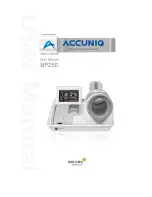
12
How to Use MENU
Function display of the button varies depending on the selected item.
Buttons
fi
%
VOLUME/
)
VOLUME/
SELECT(–)
MENU
Displays
∞
5
+
3
–
2
EXIT
Functions
Selects the items in forward rotation.
Selects the items in reverse rotation.
Increases the value (up to the maximum).
Selects the setting (value) in forward rotation.
Decreases the value (up to the minimum).
Selects the setting (value) in reverse rotation.
Exits from MENU.
EXIT
CHROMA
MENU
PHASE
BRIGHT
CONTRAST
VOLUME/SELECT
: 00
: LOWER
: 9300
: AUTO
: 00
: STD.
<MENU>
APERTURE
ADJ. BAR POSI.
COLOR TEMP.
COLOR SYSTEM
COMPO. LEVEL
RUSH DELAY
COMPO. LEVEL
Adjusts the component level of the monitor for the
component signal or the SDI signal.
• –40
“
+10
NOTE:
When inputting the component signal or the SDI signal, check if
“COMPO. LEVEL” is adjusted properly for the standard color bar
currently used. For details, see page 5.
RUSH DELAY
Sets the delay time between when the stand-by button
is pressed and when the monitor actually turns on.
• STD.:
Power turns on about 1 second after the
stand-by button is pressed.
• SLOW:
Power turns on about 3 seconds after the
stand-by button is pressed.
NOTE:
It is recommended to apply “SLOW” to some of the monitors if you
need to turn on multiple monitors at the same time. You can control
the rush current of the entire system.
APERTURE
Adjusts the picture aperture level.
• 00
“
+40
ADJ. BAR POSI.
Selects the level bar position on the screen which
appears when adjusting picture or volume.
• UPPER
• LOWER
COLOR TEMP.
Selects the color temperature.
• 9300
• 6500
COLOR SYSTEM
Selects the color system.
• AUTO:
Selects NTSC or PAL automatically depending
on the input signal.
• NTSC:
Keeps the NTSC color system.
• PAL:
Keeps the PAL color system.
NOTE:
Normally select “AUTO.” If the input signal is unstable, select “NTSC”
or “PAL.”
7
Function, Contents, and the Adjustment Range of Each Item
VOLUME : 20
VOLUME : 20
UPPER
LOWER
[10-15]_TM-H150CG.p65
04.1.17, 4:05 PM
12







































